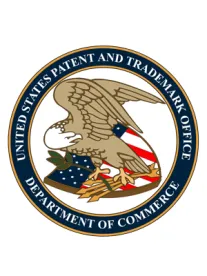On December 16, 2014, the USPTO published the 2014 Interim Guidance on Patent Subject Matter Eligibility. in the Federal Register, replacing the previous Guidelines issued in March 2014 (“March Guidelines”). The March Guidelines led to an increase in rejections under 35 U.S.C. § 101, particularly in claims dealing with naturally derived products. The new Interim Guidance seeks to address some issues that patent practitioners and stakeholders had with the earlier March Guidelines. The updated Interim Guidance goes into effect immediately, although there is a 90-day public comment period, expiring March 15, 2015. The Patent Office also provided Examples specific to naturally derived products, and indicated that Examples directed to Abstract Ideas would be available shortly on the USPTO website. Although the Interim Guidance is directed to all types of subject matter, including business methods and software, the focus of this client alert will be on naturally derived products. Particular differences between the new Interim Guidance and the March Guidelines for the analysis of naturally derived products are:
1. The “significantly different” test was replaced by a two-part “markedly different” followed by “significantly more” test:
-
In the March Guidelines, the analysis began with a determination of whether the claim recites or involves a judicial exception such as an abstract idea, a law of nature/natural principle, natural phenomena or natural products. The analysis then proceeded to whether the claim as a whole recites something "significantly different” from the judicial exception. The “significantly different” test was a combination of the “significantly more” and “markedly different” tests from the case law.
-
However, in the new Interim Guidance, the analysis begins with a determination of whether a claim is directed to something having “markedly different characteristics” so that it is not directed to a judicial exception such as a natural product. The “markedly different characteristics” analysis looks to structure, function, and/or other properties of the naturally occurring product. If the claim is not directed to something having “markedly different characteristics” then the analysis proceeds to the second step, where a determination is made of whether the claim recites additional elements that amount to “significantly more” than the judicial exception. If the claim is directed to something having “markedly different characteristics” then the claim qualifies as patent-eligible subject matter, without the need for proceeding to the second step. Thus, in many instances it will not be necessary to go through the analysis of whether the claim is directed to “significantly more” than the judicial exception. This simplifies the analysis for claims where it can be shown that they are directed to something having “markedly different characteristics” from those of the product of nature. A flowchart of the subject matter eligibility test in the Interim Guidance is illustrated below[1]:

2. “Markedly different characteristics” test is to be applied to the combination of components as a whole, and not to the individual parts:
-
The Interim Guidance specifically points out, “[w]hen the nature-based product is produced by combining multiple components, the markedly different characteristics analysis should be applied to the resultant nature-based combination, rather than its component parts.” Interim Guidance at p. 74623. Thus, while the March Guidelines made it more likely that a combination of naturally occurring substances would be subject to a §101 rejection, the Interim Guidance should result in more combination patent claims being patent-eligible.
-
This will positively impact industries such as vaccine manufacturers, agro-bio, biotech and pharma, where claims are often directed to a combination of components.
3. Isolation and purification play a factor in the “markedly different characteristics” test:
-
The “markedly different characteristics” analysis includes isolation and purification as a potential “markedly different characteristic,” so long as there is a “resultant change in characteristics sufficient to show a marked difference from the product’s naturally occurring counterpart.” Interim Guidance at p. 74623. Examples of potential changes that would result in a marked difference in the case of isolated or purified substance is a change in biological or pharmacological function or activity, chemical or physical properties, phenotype, or structure and form of the product.
4. Streamlined eligibility determinations:
-
Finally, the Interim Guidance allows for “streamlined eligibility” determinations when the claim, read as a whole, “clearly does not seek to tie up any judicial exception” such that others cannot practice it. In such a case, the Examiner may determine that the subject matter is patent-eligible without going through the detailed analysis set forth above.
The Interim Guidance also stresses that in accordance with compact prosecution, along with determining eligibility, all claims are to be fully examined under each of the other patentability requirements: 35 U.S.C. §§102, 103, 112, and 101 (utility, inventorship, double patenting) and non-statutory double patenting.
For more information on the Interim Guidance or patent prosecution in general, please contact the authors listed above, or the Drinker Biddle lawyer with whom you regularly work.
[1] The “markedly different characteristics test” is used to determine whether the claim is directed to a law of nature or natural phenomenon, Step 2A in the flowchart.




 />i
/>i

